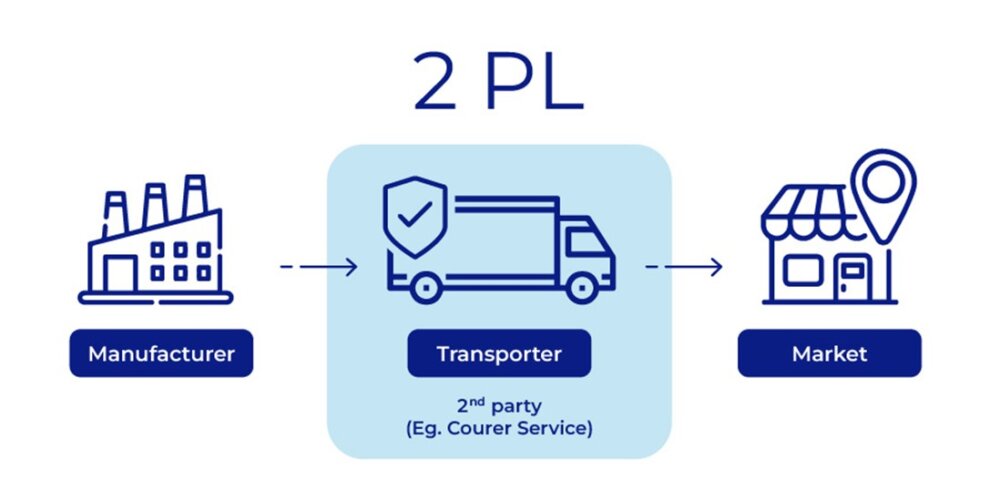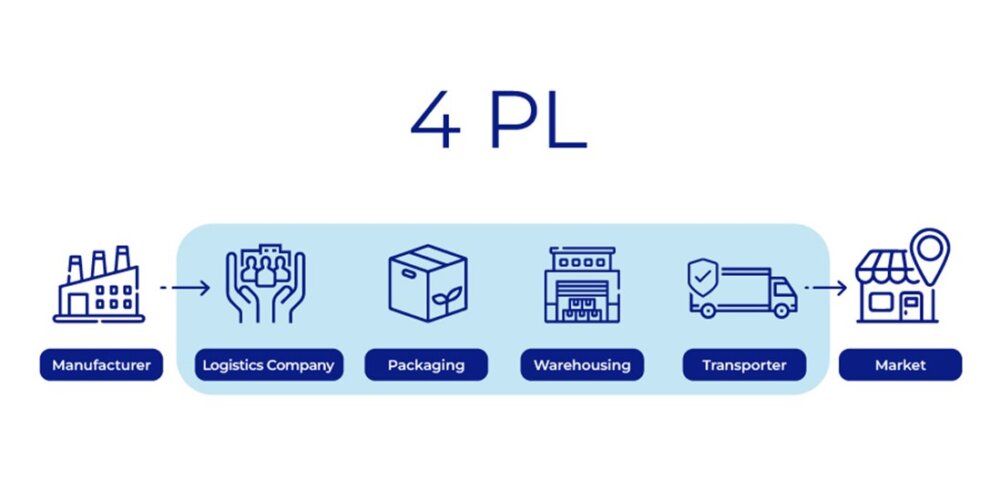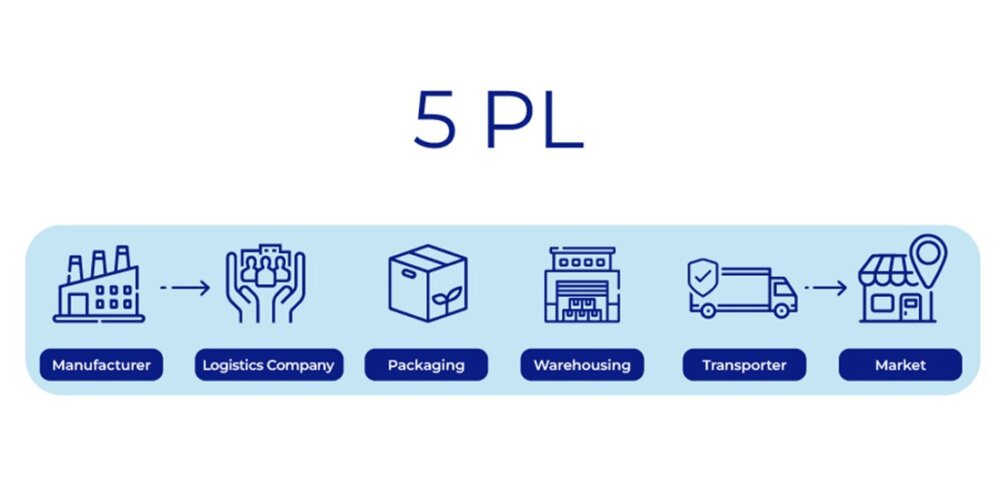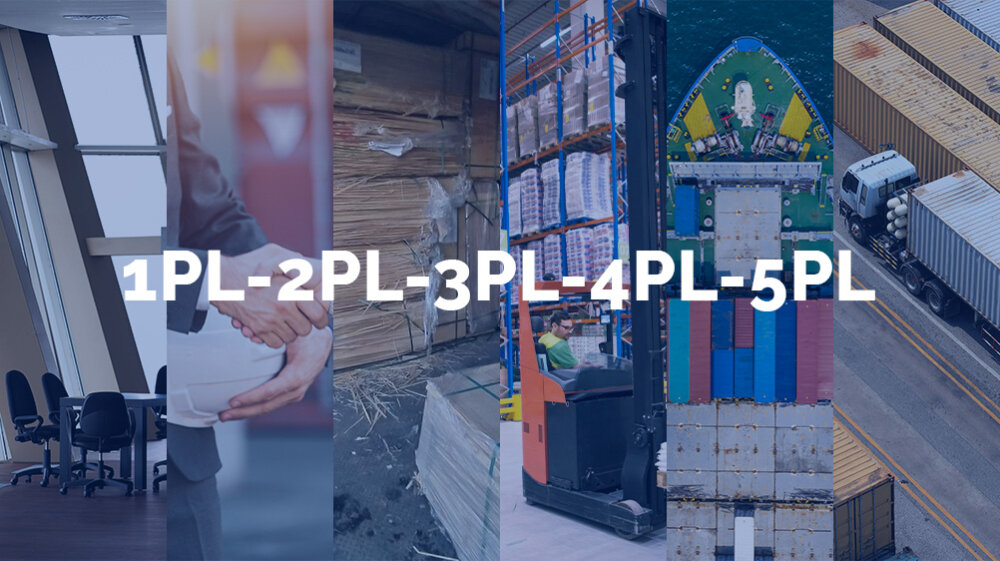
What are 1PL-5PL? What are their differences?
Logistics providers, also known as logistics service providers, are commercial businesses that provide logistics services by performing specialized operations or complex logistical duties, as well as carrying out integrated management of the client’s supply chains.
Insourcing, outsourcing, integrated logistics, and network logistics operations are all firmly linked to the concept of a logistics provider.
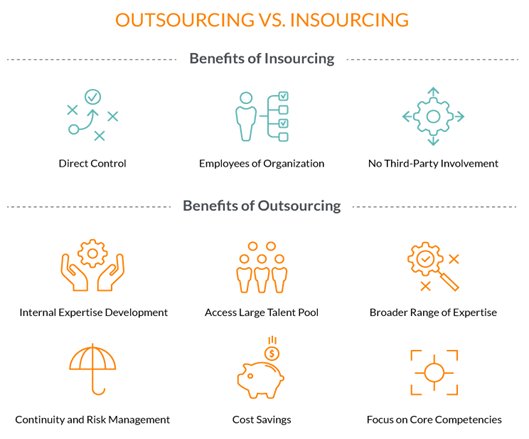
Companies routinely work with logistics providers to ensure that their products are delivered on schedule. These logistics partners are grouped into five groups, each of which provides varying degrees of supply chain assistance. These groups are designated as 1PL, 2PL, 3PL, 4PL, and 5PL.
1PL: First-Party Logistics
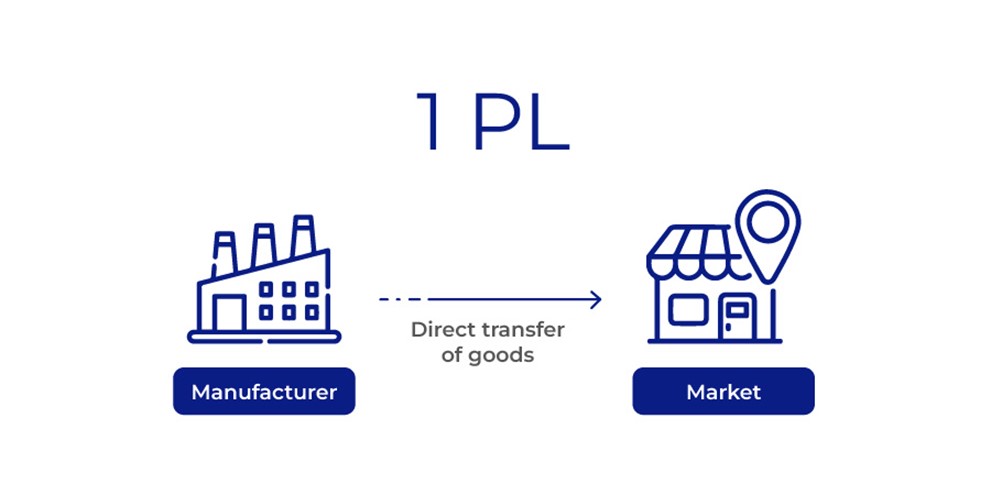
1PL, or first-party logistics, firm manages its own logistical operations. The corporation oversees everything, from procuring raw materials to delivering final items to clients.
Small enterprises or startups with limited operations that can manage their logistical needs autonomously generally choose 1PL. Larger firms, on the other hand, may employ 1PL for specific activities, such as maintaining their own warehouses or transportation fleets.
Manufacturers, wholesalers, and retailers are examples of 1PLs who handle their own logistical procedures.
2PL: Second-Party Logistics
Second-party logistics, or 2PL, is a logistics company that frequently provides transportation services to its partners. It might be a company that owns or operates planes, automobiles, or ships. They do not own the items, and their only responsibility is to move them from one spot to another. The majority of 2PL providers are employed by medium-sized businesses that cannot afford to dedicate a full team to handle their logistics internally.
A 2PL supplier is often in charge of the following responsibilities:
- Loading and Unloading of Items
The 2PL provider must pick up delivery items from a warehouse and load them onto cars according to customer specifications. In many cases, this may entail working with warehouse personnel to ensure that all items are loaded securely and appropriately.
2. Relocating Items according to the Bill of Lading
A truck should never be loaded or depart a facility without a bill of lading indicating how the goods will be transported. A bill of lading is a legally binding contract that outlines what is on board, where it is going, and how it shall be treated while in transit.
- Paperwork Gathering
A 2PL provider must additionally collect and return all shipment documentation to the consignor. This includes inspection or customs papers, invoices, and returned products.
3PL: Third-Party Logistics
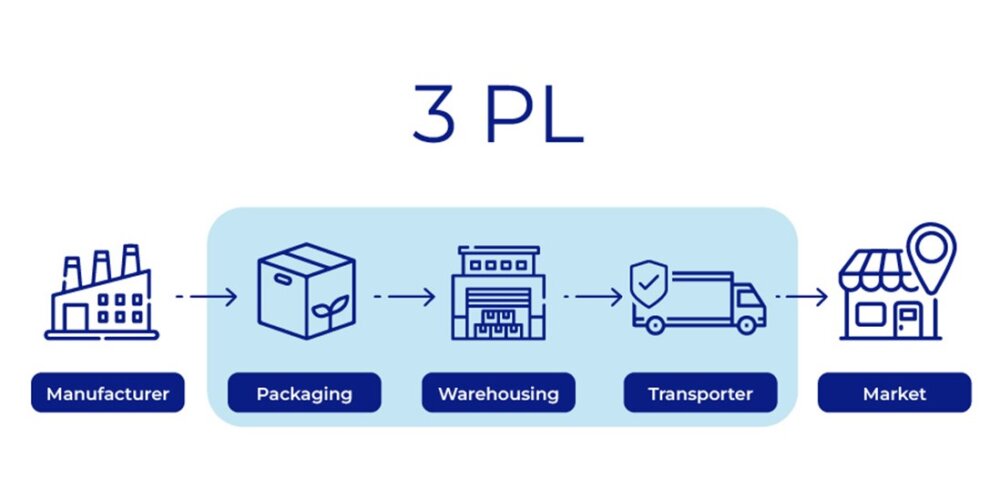
A third-party logistics firm, or 3PL, outsources supply chain logistics to a wide range of businesses. 3PLs handle shipping, warehousing, and distribution for businesses that do not wish to manage these areas of their logistics. Because of their connections, expertise, and talent, 3PLs, like any other type of specialized team, may give their clients a higher degree of service.
A fulfillment business, fulfillment warehouse, or fulfillment center is another name for a third-party logistics (3PL) provider. Order fulfillment organisations and 3PL service providers offer the same services.
These services include warehousing, inventory management, picking and packaging, and shipping and receiving.
Some 3PL firms additionally provide the following extra services:
• Freight shipment (FTL and LTL)
• Kitting;
• Freight forwarding; and
• Reverse logistics (returns).
4PL: Fourth-Party Logistics
The notion of 4PL in logistics is cutting-edge. This phrase refers to businesses that offer complete and integrated logistics solutions, from planning to implementation.
4PL suppliers frequently work closely with their partners to thoroughly understand their logistical needs and goals. They then design and implement a customised logistics solution that leverages a network of logistics providers to simplify operations, save costs, and improve supply chain visibility. Working with a 4PL provider has the advantage of acting as an integrator, offering a single point of contact for all logistical activities, simplifying logistics management for enterprises, and providing a full view of the supply chain.
The three main reasons for hiring a 4PL service provider are as follows:
- A solution-oriented mindset
- Vendor management
- An IT-enabled supply chain
5PL: Fifth-Party Logistics
The most recent and expanding logistics concept is 5PL. A 5PL provider is a company that provides a strategic logistics solution to businesses, combining all of the benefits of 4PL with extra services such as consulting. They act as an integrator with experience in engineering and unique flow automation systems, using current technologies such as artificial intelligence (AI), big data analytics, and the Internet of Things (IoT) to build a totally autonomous, self-optimizing supply chain. A 5PL will create, organise, and implement a client’s logistics solutions, relieving them of all supply chain management responsibilities. Because of their focus on supply networks, they will be in control of every supply chain within a company.
The notion of 5 PLs is still in its early phases, but common responsibilities include:
- Providing a single point of contact for managing multiple third-party logistics providers
- Coordinating logistics activities across multiple regions or countries
- Developing and implementing supply chain strategies
- Providing supply chain analytics and business intelligence
Finally, the shift from 1PL to 5PL logistics represents a shift towards more collaborative, technology-driven, and customer-centric supply chain management. 5PL providers provide comprehensive solutions that use data and advanced technology to optimize operations, make better decisions, and gain a competitive edge. This change provides organizations with a number of options for simplifying their supply chain, increasing efficiency, and meeting the demands of a complex global marketplace.
